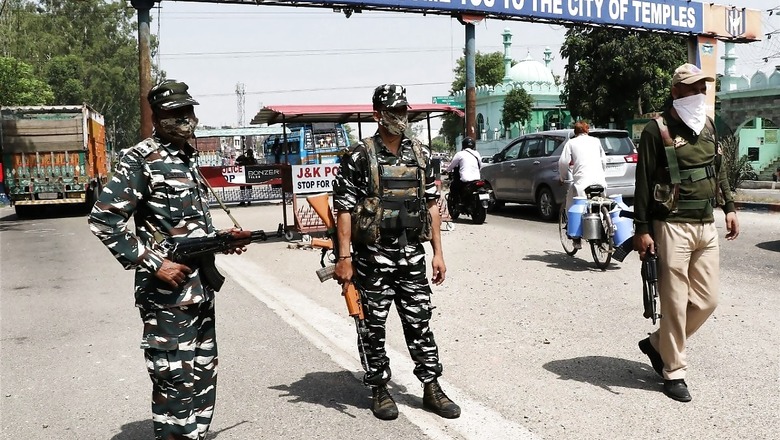
views
How could a drone, or two, breach the high-security perimeter of the Jammu airbase, travel 400 metres, get perilously close to a Mi-17 helicopter, drop IEDs, trigger two explosions, and go back to the handler?
Yes, someone at the airbase should have spotted the drones. They aren’t exactly silent creatures. But no one did. Three units of the National Security Guard now at the airbase with anti-drone guns have been put on duty. In fact, NGS units with anti-drone guns have been deployed at all forward bases to ward off any such unmanned aerial vehicles. Many have been cited and some have been shot down in the Jammu region.
Why couldn’t sophisticated radars at the airbase detect the incoming drones? Air Force officials say drones fly low, fly slow and have the signature of a bird. So they are almost impossible to detect. If that is the case, then what is the anti-drone technology to deal with this threat?
Let’s divide this up into two: drone monitoring equipment and drone countermeasure equipment.
For drone monitoring, one would typically use radiofrequency (RF) analysers, acoustic sensors (microphones), optical sensors (cameras) and radar.
But neutralising drones comes with its own set of challenges. One can either physically destroy a drone, neutralise it, or take control of the drone. And there is enough technology available out there for this.
A radiofrequency jammer is one. It is a static, mobile, or handheld device that transmits a large amount of RF energy towards the drone and cuts the communication between the handler and the drone. This will lead to the drone falling on the ground, landing, or flying off in random directions.
Then there is the GPS spoofer that sends a new signal to the drone, replacing the communication with its GPS. This way, one can fool the drone and take control of it.
For physically capturing a drone, there are nets and net guns: essentially, one can fire a net at the drone that stops its rotor blades.
Another way to physically destroy a drone is through high-energy lasers. The laser kills the drone by destroying its structure and/or the electronics.
Very interestingly, eagles can be trained to counter drones as well by tapping into their natural hunting instinct. Of course, one doesn’t want a bird anywhere near an airfield or airbase, given what a huge hazard they are to planes.
Now, these technologies on their own may not be enough. They are used in varying combinations by militaries across the world.
Cheap, commercially available drones and drone swarms are the weapons of choice for terror organisations across the world. And we have seen it in Jammu in 2021.
We have seen it in 2019 when Houthi rebels struck at the heart of Saudi Arabia’s oil infrastructure from 1,500 km away using a drone swarm. Aramco, the Saudi crown jewel, had burnt for hours. How could a national asset with the US-made Patriot 3 air defence missile shield come under attack? Houthi rebels, who had been fighting a Saudi-led coalition, had used 18 drones and 7 missiles to put together an easy-on-the-pocket attack to burn up billions of dollars worth of oil and infrastructure.
The threat from small, commercial drones is not just on military installations. They are a threat to virtually everything. Big industries. VIP movement. Election rallies. Venezuela’s president narrowly survived a drone assassination attempt in 2018.
The big challenge is how to tell a friendly drone from one with deadly intent. So when India acquires its anti-drone technology, it will have to keep all these challenges in mind, says Group Captain Anupam Banerjee, a fighter pilot and former spokesperson of the IAF.
Until new anti-drone technology comes in, can our traditional air defence systems like the Israeli Spyder or the Russian OSA-AK be used? These systems are designed to detect and destroy incoming aerial threats like missiles and fighter jets. Theoretically, they can be modified to detect and destroy drones. But two problems will arise. One, it will capture every bird and every drone, friendly and otherwise. That is a problem of plenty that is a foolproof recipe for confusion.
Secondly, will one deploy the million-dollar missiles these systems carry to destroy a commercial drone that costs 20,000 rupees?
We live in complex times, with complex technologies, posing complex threats. There are no simple solutions.
Read all the Latest News, Breaking News and Coronavirus News here.



















Comments
0 comment